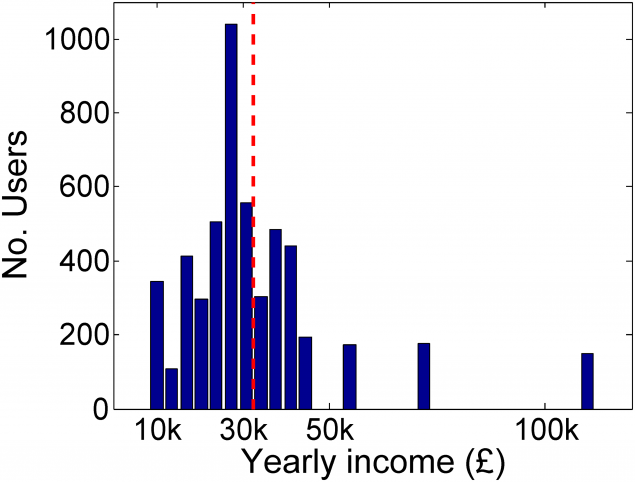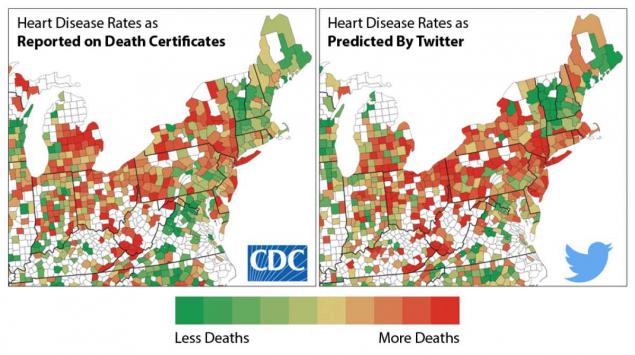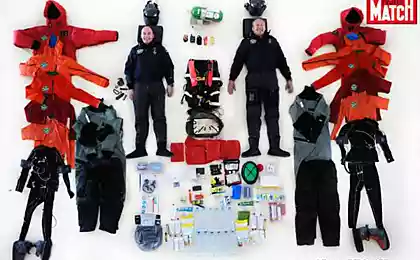759
Poor optimists: Scientists have identified a link between the content of tweets and income users
The team of scientists, IT experts from several American and British universities, and Microsoft Research have identified a link between the content and the emotional coloration of messages on Twitter and income users. People with high incomes publish news about politics and express their anger, but with less - using profanity and publish optimistic message.

In the UK there is «The Standard Occupational Classification» - system classifies workers in complexity and skill of labor. This hierarchy consists of nine classes. Researchers selected five thousand accounts, representing all nine classes, and treated with a base of ten million of their tweets.
Processing tweets scientists chose specific words, most often occurring in each class. For each class algorithm has selected the words most frequently used are very different from the rate in other classes. The researchers then grouped the results manually by category and emotional color.
People with higher income, less often express religious and behave more calmly. They have more followers and retweets than users with lower income, although they send fewer messages and fewer links. Automatic language analysis showed that people with high incomes often express anger and fear, publish news about politics, non-governmental organizations and the reports of corporations.
People with lower income more likely to use profanity, but their posts are more optimistic. They use Twitter to communicate on everyday topics.
The data obtained will allow to solve the inverse problem - to guess the income of users Twitter, in any case, in the UK.

The income users in the sample according to their number. The study involved 5191 account. I>
Handling large volumes of messages to Twitter allows scientists to conduct research in various fields of science. Previously, psychologists have shown that negative emotions lead to heart disease . Then the researchers analyzed 148 million tweets by users from different regions of the United States in 1347, highlighting the signs of negative emotions - mentioning accidents, crimes and diseases, mourning the lack of sleep and other words markers. Then, the scientists compared the results with the actual geographical distribution of cardiovascular disease. As it turned out, both cards are alike.

Source: geektimes.ru/post/263360/

In the UK there is «The Standard Occupational Classification» - system classifies workers in complexity and skill of labor. This hierarchy consists of nine classes. Researchers selected five thousand accounts, representing all nine classes, and treated with a base of ten million of their tweets.
Processing tweets scientists chose specific words, most often occurring in each class. For each class algorithm has selected the words most frequently used are very different from the rate in other classes. The researchers then grouped the results manually by category and emotional color.
People with higher income, less often express religious and behave more calmly. They have more followers and retweets than users with lower income, although they send fewer messages and fewer links. Automatic language analysis showed that people with high incomes often express anger and fear, publish news about politics, non-governmental organizations and the reports of corporations.
People with lower income more likely to use profanity, but their posts are more optimistic. They use Twitter to communicate on everyday topics.
The data obtained will allow to solve the inverse problem - to guess the income of users Twitter, in any case, in the UK.

The income users in the sample according to their number. The study involved 5191 account. I>
Handling large volumes of messages to Twitter allows scientists to conduct research in various fields of science. Previously, psychologists have shown that negative emotions lead to heart disease . Then the researchers analyzed 148 million tweets by users from different regions of the United States in 1347, highlighting the signs of negative emotions - mentioning accidents, crimes and diseases, mourning the lack of sleep and other words markers. Then, the scientists compared the results with the actual geographical distribution of cardiovascular disease. As it turned out, both cards are alike.

Source: geektimes.ru/post/263360/























